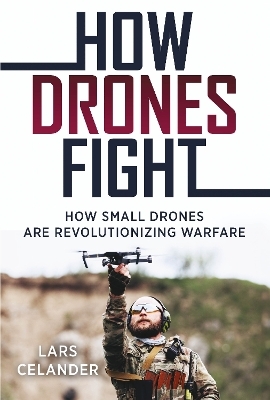
How Drones Fight
How Small Drones are Revolutionizing Warfare
Seiten
2024
Casemate Publishers (Verlag)
978-1-63624-458-7 (ISBN)
Casemate Publishers (Verlag)
978-1-63624-458-7 (ISBN)
A detailed examination of how drones - particularly the small tactical drones that have revolutionized ground combat - fight.
An in-depth analysis of how drones have revolutionized ground combat, including combat experience from recent wars.
In 2020, Azerbaijan used drones to defeat Armenia, and large-scale use of small drones in Ukraine since 2022 has been so effective that it has rendered large-scale maneuver warfare largely impossible. Drones enable a military force to operate over enemy-held territory at little risk to its soldiers. Used to enable detailed observation and accurate direct mortar and artillery fire, they can also be the weapon—attacking specific targets or suppressing enemy fire or forces. On these missions a drone might be closely controlled by a trained pilot, or it might use its own sensors and software to make decisions on routes and actions. Yet despite the dramatic effect drones have already had on the battlefield, drone technology is still in its infancy—perhaps comparable to the stage of development that aircraft reached during World War I.
As drones will surely continue to disrupt the battlefield, it is crucial for anyone with an interest in modern and future warfare to understand how drones operate, what they are already capable of, and how they may further evolve. Historian and systems engineer Lars Celander explains the engineering and physics of drones, their capabilities and limitations. He surveys the different types of drones, detailing the different navigation, communication and sensor systems that are currently in use and the various weapons a drone can be equipped with. Exploring not only the tactics of drone operations to date but the various detection methods, tactics, and weapons currently utilized in counter-drone warfare, he evaluates what drones have contributed to recent wars and what the future of drone warfare may hold.
An in-depth analysis of how drones have revolutionized ground combat, including combat experience from recent wars.
In 2020, Azerbaijan used drones to defeat Armenia, and large-scale use of small drones in Ukraine since 2022 has been so effective that it has rendered large-scale maneuver warfare largely impossible. Drones enable a military force to operate over enemy-held territory at little risk to its soldiers. Used to enable detailed observation and accurate direct mortar and artillery fire, they can also be the weapon—attacking specific targets or suppressing enemy fire or forces. On these missions a drone might be closely controlled by a trained pilot, or it might use its own sensors and software to make decisions on routes and actions. Yet despite the dramatic effect drones have already had on the battlefield, drone technology is still in its infancy—perhaps comparable to the stage of development that aircraft reached during World War I.
As drones will surely continue to disrupt the battlefield, it is crucial for anyone with an interest in modern and future warfare to understand how drones operate, what they are already capable of, and how they may further evolve. Historian and systems engineer Lars Celander explains the engineering and physics of drones, their capabilities and limitations. He surveys the different types of drones, detailing the different navigation, communication and sensor systems that are currently in use and the various weapons a drone can be equipped with. Exploring not only the tactics of drone operations to date but the various detection methods, tactics, and weapons currently utilized in counter-drone warfare, he evaluates what drones have contributed to recent wars and what the future of drone warfare may hold.
Introduction
Types of Drones
Navigation
Sensors
Communications
Weapons
Detecting Drones
Countering Drones (“Soft Kill”)
Shooting Down Drones (“Hard Kill”)
Drone Tactics
Anti-Drone Tactics
Putting It All Together
Global War on Terrorism
Armenia vs Azerbaijan 2020
Russia vs Ukraine 2022
Hard Limits on What Drones Can Do
Discussion
Appendix A Fast Loops and Software Development
Appendix B Costs
Appendix C Other Types of Drones
Notes on Sources
Bibliography
Index
| Erscheinungsdatum | 25.05.2024 |
|---|---|
| Zusatzinfo | 10 illustrations and 22 photographs |
| Sprache | englisch |
| Maße | 152 x 229 mm |
| Themenwelt | Natur / Technik ► Fahrzeuge / Flugzeuge / Schiffe ► Militärfahrzeuge / -flugzeuge / -schiffe |
| Geschichte ► Teilgebiete der Geschichte ► Militärgeschichte | |
| Naturwissenschaften | |
| Sozialwissenschaften ► Politik / Verwaltung | |
| Technik ► Fahrzeugbau / Schiffbau | |
| Technik ► Luft- / Raumfahrttechnik | |
| ISBN-10 | 1-63624-458-0 / 1636244580 |
| ISBN-13 | 978-1-63624-458-7 / 9781636244587 |
| Zustand | Neuware |
| Haben Sie eine Frage zum Produkt? |
Mehr entdecken
aus dem Bereich
aus dem Bereich
von der Machtergreifung bis zur Gründung der Vereinten Nationen
Buch | Softcover (2023)
Motorbuch Verlag
24,90 €


